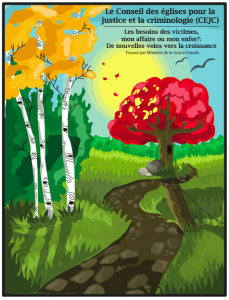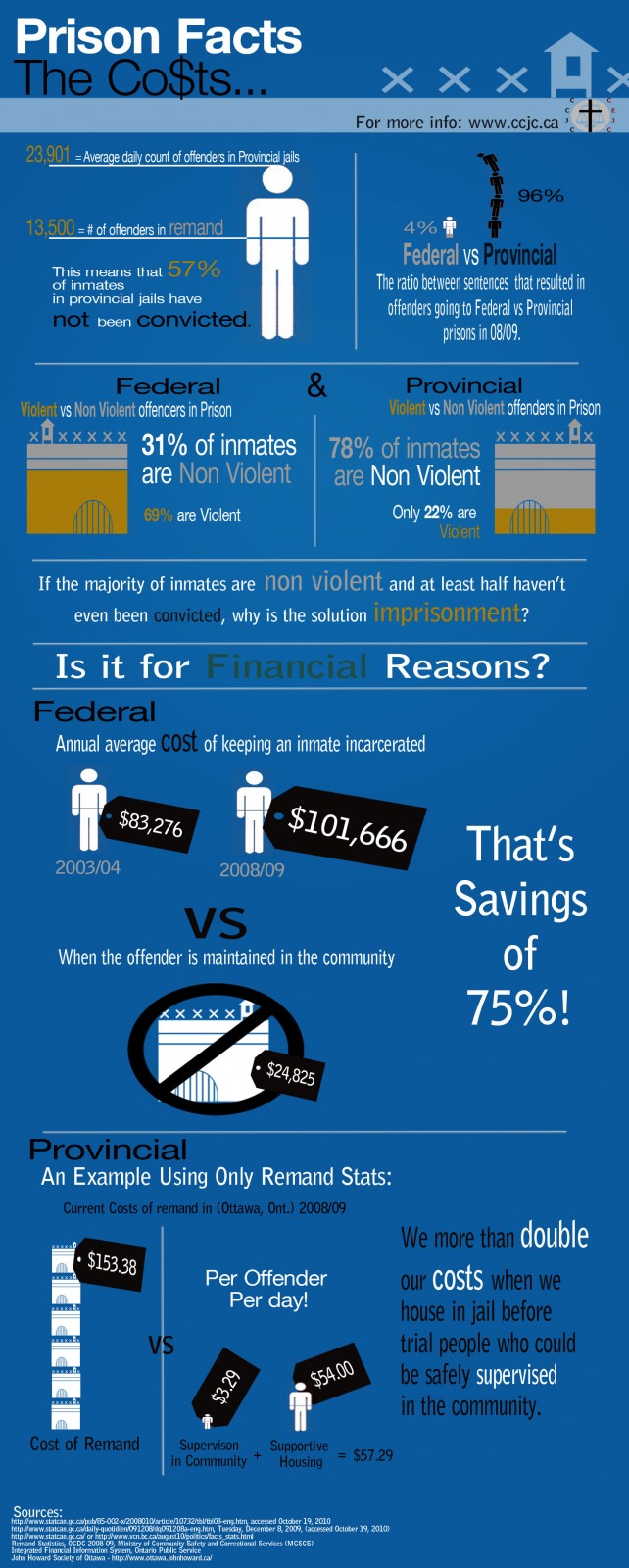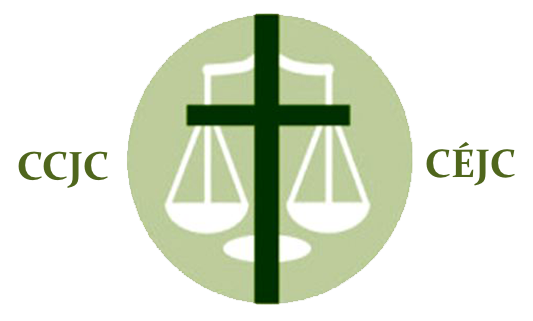Past Projects
Victims' Pastoral Care

Victims of crime seek to be understood in order to make sense of their lives in the aftermath of crime. Recognizing that the current judicial systems are predominantly focused on offenders, the Church Council seeks to explore and address the needs of victims through developing consultation on pastoral care and victims needs. The impetus to develop a pastoral care for those affected by crime initiative relates to a community symposium on Victims and the Church, held in Ottawa in May of 2007. Since then, the Church Council has been working to equip churches to take a more active and helpful role in responding to crime victims and others affected by crime in their communities. The Church Council, in collaboration with Mennonite Central Committee Canada and the Quakers, has developed a project to resource and train pastoral care so they may respond to the needs of victims of crime in their community. The first step, which took place during our 2009 Annual General Meeting, was to promote a national consultation that brough together representatives from NGOs, government, churches, hospitals, prisons, and other ministries.In May 2010, the Church Council hosted a follow-up forum, the theme of which was “Victims’ Needs, Why Should I Care?” Our objective was to identify new initiatives that foster personal growth and to invite the providers of those initiatives to share their experiences with one another. The forum created the opportunity for the sharing of real-life experiences by victims, as well as discussion and workshops about different programs and approaches. Download the full report in French and English
Martha and Howard
Should Canada import failed US criminal justice policies?
 One percent of the U.S. adult population is in prison. This is the highest rate in the world, even higher than Russia and China. Why are U.S. policymakers reconsidering their “tough on crime” approach? What lessons could Canadians learn from the United States about crime control, criminal justice policy and incarceration? On May 6, 2008 CCJC and the John Howard Society of Canada co-hosted a public forum featuring Marc Mauer, Executive Director of the Washington, D.C. Sentencing Project. Mauer is the author of Race to Incarcerate, in which he explains how more incarceration may actually cause crime. He questioned why Canada wants to imitate criminal justice policies that have failed in the United States. To promote this event, CCJC invited Martha and Howard to visit Ottawa and share their views on Canada’s “tough on crime” agenda.Martha, Howard and their dog Skippy are plywood characters created by Stephen Goldsmith of the Urban Design Coalition in Salt Lake City, US. They were created to raise awareness about downtown problems and successes in 1989, and did a great job at calling media and public attention to the issues they were discussing (taped dialogues were played along with their display). They became the every-man-and-every-woman’s voice when issues of public interest were discussed by the media. Martha and Howard were shocked to learn that Canada was adopting many of the measures that their government implemented about 30 years ago – now proven to be a huge failure. They could not help but express their confusion about the Canadian “tough on crime” agenda while they were doing their sight-seeing visits Rideau Street, downtown market, Sparks Street, City Hall, and while they were waiting for their bus at Billings Bridge and Hurdman stations. Also, see what Martha and Howard had to say about the issues at stake this Election during their visit to Ottawa. Watch their election videos: on victims; on youth crime; on effective solutions to crime; on alternatives to jail; on prison population; and on smart investments.
One percent of the U.S. adult population is in prison. This is the highest rate in the world, even higher than Russia and China. Why are U.S. policymakers reconsidering their “tough on crime” approach? What lessons could Canadians learn from the United States about crime control, criminal justice policy and incarceration? On May 6, 2008 CCJC and the John Howard Society of Canada co-hosted a public forum featuring Marc Mauer, Executive Director of the Washington, D.C. Sentencing Project. Mauer is the author of Race to Incarcerate, in which he explains how more incarceration may actually cause crime. He questioned why Canada wants to imitate criminal justice policies that have failed in the United States. To promote this event, CCJC invited Martha and Howard to visit Ottawa and share their views on Canada’s “tough on crime” agenda.Martha, Howard and their dog Skippy are plywood characters created by Stephen Goldsmith of the Urban Design Coalition in Salt Lake City, US. They were created to raise awareness about downtown problems and successes in 1989, and did a great job at calling media and public attention to the issues they were discussing (taped dialogues were played along with their display). They became the every-man-and-every-woman’s voice when issues of public interest were discussed by the media. Martha and Howard were shocked to learn that Canada was adopting many of the measures that their government implemented about 30 years ago – now proven to be a huge failure. They could not help but express their confusion about the Canadian “tough on crime” agenda while they were doing their sight-seeing visits Rideau Street, downtown market, Sparks Street, City Hall, and while they were waiting for their bus at Billings Bridge and Hurdman stations. Also, see what Martha and Howard had to say about the issues at stake this Election during their visit to Ottawa. Watch their election videos: on victims; on youth crime; on effective solutions to crime; on alternatives to jail; on prison population; and on smart investments.
The Collaborative Justice Program
Forgiveness Booklet
CoSA National Demonstration Project
Click here to learn more about the CoSA National Demonstration Project (English and French)
***Le texte français suit***
Circles of Support and Accountability (CoSA): An Effective Approach to Community Safety
For Immediate Release:
February 4, 2015
Ottawa, Ontario Canada- The Church Council on Justice and Corrections (CCJC), in collaboration with CoSA sites across Canada, recently completed a five year demonstration project funded through the National Crime Prevention Centre of Public Safety Canada. The result of this project is a comprehensive evaluation report of CoSA in Canada.
Circles of Support and Accountability (CoSA) is a community-based reintegration program, grounded in restorative justice principles, that holds sex offender’s accountable for the harm they have caused while assisting with their task of re-entry into communities at the end of their sentences.
This evaluation is a valuable addition to the growing body of international research on CoSA programs. This report, along with similar research, indicates that CoSA is a critical tool in the re-integration for high-risk, high needs sexual offenders in Canada and plays an essential role in reducing sexual victimization and keeping communities safe.
This evaluation report is the first of its kind for CoSA in Canada in that it provides an in-depth look at the process dynamics of CoSAs through site case studies. The report addresses the question of what goes on in a circle of support and accountability, something that has not previously been examined. It also brings into question the sustainability of CoSA in Canada, given imminent federal funding cuts to many sites on March 31, 2015.
A close look at the inner workings of CoSA reveals a program where dedicated staff and volunteers strive to provide vital integration support to individuals being released from federal correctional facilities into communities across Canada. Most importantly, this report demonstrates how CoSA programs provide a necessary compliment to formalized support structures through a focus on building supportive relationships between recently released offenders, staff, and circle volunteers who understand what’s at stake in holding offenders accountable to the community.
Click here to read the full report.
End Release
CERCLES DE SOUTIEN ET DE RESPONSABILITÉ (CSR):
Une approche efficace pour la sécurité de la communauté
POUR PUBLICATION IMMÉDIATE:
Le 4 février 2015
Ottawa, Ontario Canada- Le Conseil des Églises en Justice et Criminologie (CEJC), en collaboration avec différents sites CSR à travers le Canada, a récemment terminé un projet expérimental de cinq ans, subventionné par le Centre National de Prévention du Crime qui dépend de la Sécurité publique du Canada. Le résultat de ce projet est un rapport d’évaluation complet des CSRs au Canada.
Les Cercles de Soutien et de Responsabilité (CSR) est un programme de réintegration dans la communauté fondée sur les principes de la justice réparatrice. Il tient les contrevenants sexuels responsables du tort causé, tandis qu’il les accompagne dans leur effort de réintégration dans la communauté à la fin de leur peine d’emprisonnement.
Cette évaluation constitue un ajout précieux à l’ensemble des recherches internationales -qui ne cessent de grossir- sur les programmes des CSRs. Ce rapport, ainsi que d’autres recherches similaires, indiquent que les CSRs sont des outils essentiels pour la réintegration des contrevenants sexuels à haut risque et avec des besoins importants, au Canada, et jouent un rôle majeur dans la réduction du nombre de victimes et le maintien de la sécurité de la communauté.
Ce rapport d’évaluation est le premier du genre pour les CSRs du Canada, dans la mesure où il permet un regard approfondi sur les dynamiques développées dans les CSRs, grâce aux études de cas dans les différents sites observés. Le rapport aborde la question de ce qui se passe dans un cercle de soutien et de responsabilité, ce qui n’avait pas été examiné auparavant. Il met aussi en question la durabilité des CSR au Canada, étant données les coupures budgétaires fédérales, effectif le 31 Mars 2015, qui vont affecter de nombreux sites.
Une observation fine des fonctionnements internes met en lumière un programme où un personnel dévoué accompagné de bénévoles s’efforce d’offrir un soutien vital à la réintegration à des individus libérés des institutions pénitentiaires fédérales et renvoyés à la communauté dans tout le Canada. Plus important encore, ce rapport montre comment le programme des CSRs apporte un complément nécessaire aux structures de soutien formelles, en mettant l’accent sur la construction de relations de solidarité entre des contrevenants récemment libérés, le personnel et les bénévoles des Cercles qui comprennent ce qui est en jeu, lorsque l’on tient les contrevenants pour responsables envers la communauté.
Justice Storytelling Quilt
The Justice Storytelling Quilt was a CCJC-sponsored project by multi-media artist, Meagan O’Shea.
Meagan O’Shea and Susie Shantz sewed a quilt made from 40 patches of symbolic descriptive images produced by victims and offenders from across Canada. A touch on any patch activates a two minute audio testimony by its designer, describing the sorrowful event that took place in his/her life – fifteen stories in French and twenty-five in English.
A quilt reminds us of comfort, warmth and security. It protects us from the cold and hostile elements. There was a time when quilts were made from the scraps of material left over from sewing dresses and shirts. There was also the delight of seeing how these pieces could be put together to make a beautiful artistic design.
These concepts are also found in this quilt. It tells the stories of forty very sorrowful and horrifying events and has a way of bringing us together as a community. Since quilts represent a safe place, we find courage to listen to people share the details of the murder of a family member. The artistic image helps to portray the violence in an unthreatening manner. Just as the scraps have purpose and meaning when they are pieced together, so the wounded bits and shattered pieces of our lives can also be brought together to project a powerful message of peace.
The purpose of the quilt is not primarily to sensitize us to the pain of victims and offenders which could make us very angry and vindictive. It is designed rather, to bring us together so that we may empathize with the suffering, hope and courage of victims and offenders.
Stitched Together
CCJC created a promotional movie about the Justice Storytelling Quilt. Please click here to read the DVD’s insert (pdf – 5.8mb).
If you wish to receive a copy of this movie, please e-mail info@ccjc.ca or contact our Ottawa office at 613-563-1688.
What has been said about the Quilt experience
-
“Not Just Black And White” CCJC’s Justice Storytelling Quilt Featured In St. John’s Art Show – read more
-
Touring the Quilt in Manitoba (By Margot Lavoie, CCJC’s past-president, in 2007-2008) – read more (pdf)
-
The Justice Storytelling Quilt (Niagara Anglican, December 2006) – read more (pdf)
-
Victims and offenders share stories with talking quilt (Kitchener-Waterloo Record, May 2nd, 2006) – read more (pdf)
-
Quilt speaks pain and courage: Stories of horror, loss and compassion are sewn together in talking art (The Ottawa Citizen, November 14th, 2005) –read more (pdf)
Restorative Justice Infographic
In the image below you will find highlights from our research in 2010.

Criminal Justice at the Crossroads
I will give them a single heart and I will put a new spirit in them. I will remove theheart of stone from their bodies and give them a heart of flesh instead. – Ezekiel 11:19 As Christians we are called to act from “hearts of flesh” – founded on openness, compassion and mercy, not from “hearts of stone” – motivated by hurt, anger or fear. Yet what does this mean when it comes to dealing with those who have been afflicted by crime, with offenders, and with our criminal justice system? Criminal Justice at a Crossroad is a series of articles prepared by the CCJC, intended to assist in reflection on the issues and options now before us as a country.
Criminal Justice at a Crossroad: Why this series now?
Crime affects all of us, including our faith communities, through locked doors, security systems and higher insurance rates, and through the fear of our own safety when we hear news of crime and violence. Our parents, relatives and friends may be victims of crime. Youth in our communities may get caught up in gang brutality. Adults from our communities may be jailed and their children will suffer.
We hear a lot of ‘crime talk’ and read crime statistics. Too many lives are dominated by fear. Crime feeds our fears and can limit our hope. As a society and as Christians, we must consider how this has changed us and the way we view victims, offenders and the justice system. Do our attitudes reflect our faith values: care of the afflicted; the dignity of every person; forgiveness and the healing of broken relationships; accountability; the common good? Do our country’s criminal laws and correctional system practices make us safer? Do we let fear and prejudice hardens our hearts to being human with all our neighbours, including our ‘enemies’?
These are challenging questions, especially for those of us who have been touched by the trauma, rage and injustice of crime. Nevertheless, these questions must be asked, and asked again and again. This is particularly the case at this time.
We are currently seeing a major shift in Canada’s criminal justice priorities. Our governments, federal and provincial, are about to invest billions of dollars innew prison construction. Do policies that emphasize greater punishment, longer sentences and more incarceration help bring about reconciliation and healing, an experience of justice that can build peaceful communities? Is the spending of such vast sums of money on more prisons an exercise instewardship when it takes away tax dollars from other areas essential to thecommon good? For here is the sobering reminder: we have been commanded to love not only our friends but also our enemies (Matthew 5). This may feel cruelly intolerable in some circumstances, and we must be gentle with ourselves about that. But we know in faith that God wants to remove that stone and give us hearts of flesh.
We can help each other to sit with this promise and wait with an open spirit. We can seek out new ways of looking for justice that offer more opportunities to foster healing and grace.
Criminal Justice at the Crossroads: Introduction Download pdf
Criminal Justice at the Crossroads: Victims of Crime Download pdf
Criminal Justice at the Crossroads: People in Prisons Download pdf
